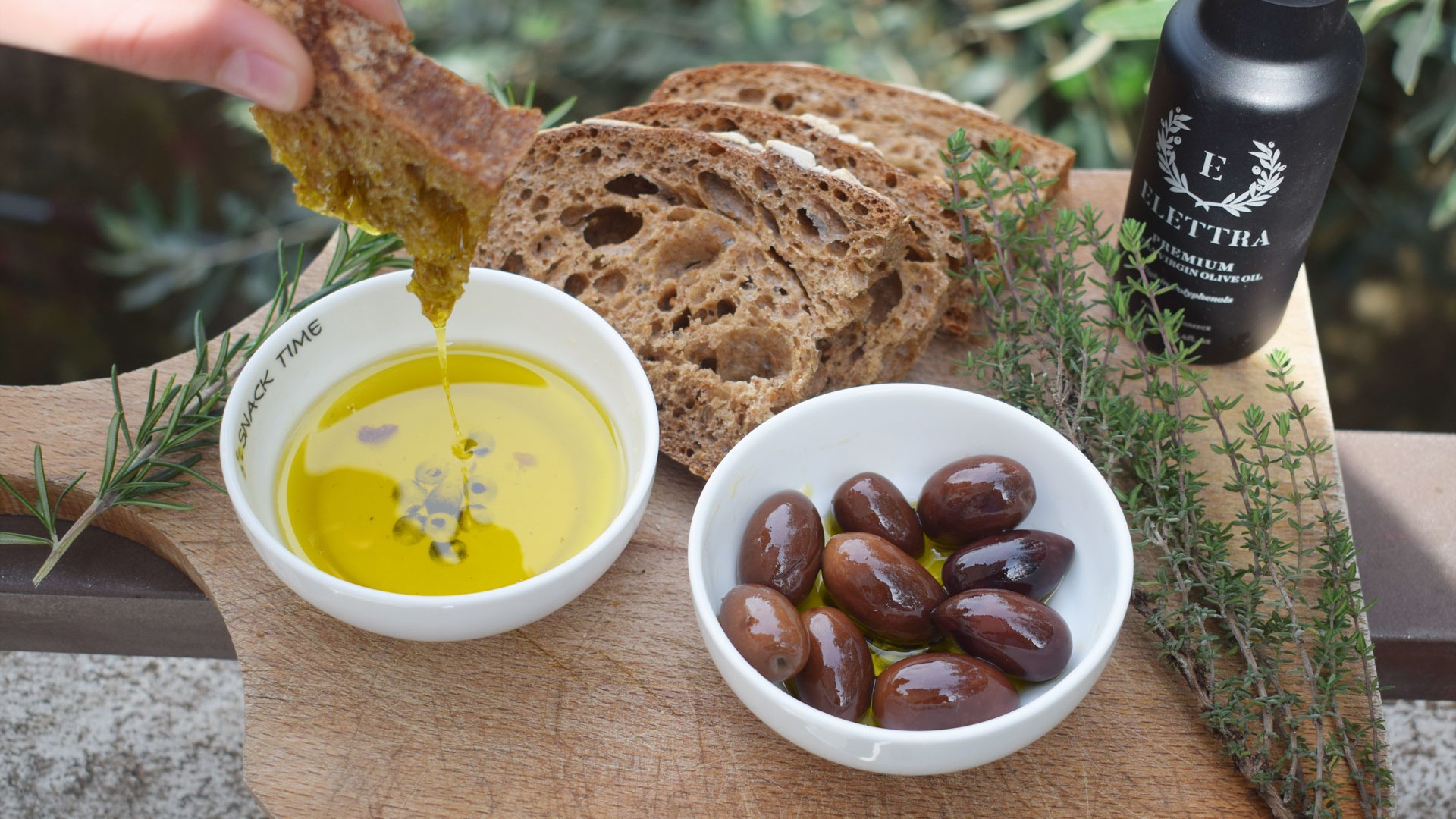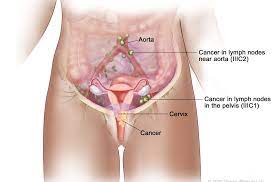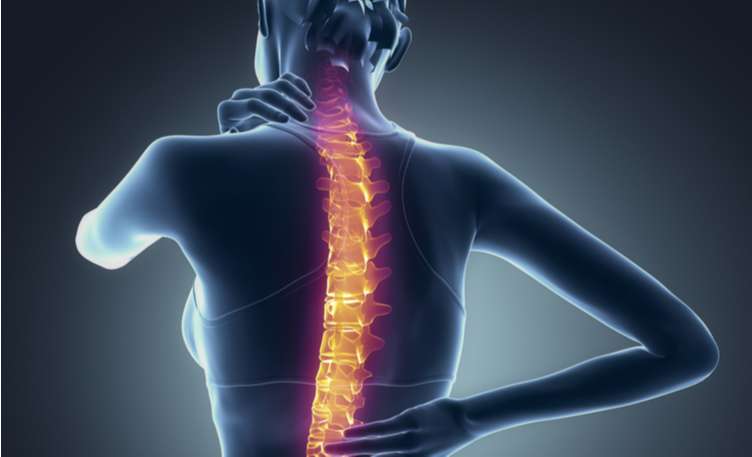ΠΡΟΣΤΑΤΕΥΤΙΚΕΣ ΕΠΙΔΡΑΣΕΙΣ ΚΑΙ ΟΦΕΛΗ ΤΟΥ ΕΛΑΙΟΛΑΔΟΥ ΣΤΗΝ ΥΓΕΙΑ ΤΩΝ ΓΥΝΑΙΚΩΝ

Προστατευτικές επιδράσεις και οφέλη του ελαιολάδου στην υγεία των γυναικών
Οι γυναίκες και οι άνδρες μοιράζονται παρόμοιες ασθένειες. Ωστόσο, οι γυναίκες έχουν μοναδικά προβλήματα, συμπεριλαμβανομένων γυναικολογικών ασθενειών και ασθενειών που σχετίζονται με την έμμηνο ρύση, την εμμηνόπαυση και την μετεμμηνόπαυση. Τις τελευταίες δεκαετίες, οι επιστήμονες έδωσαν μεγαλύτερη προσοχή στα φυσικά προϊόντα και τα παράγωγά τους λόγω της καλής ανεκτικότητας και της αποτελεσματικότητάς τους στην πρόληψη και θεραπεία ασθενειών.
Το ελαιόλαδο είναι απαραίτητο συστατικό της μεσογειακής διατροφής, μιας δίαιτας που είναι γνωστή για την προστατευτική της επίδραση στην ανθρώπινη ευημερία. Η διερεύνηση των δραστικών συστατικών του ελαιολάδου, όπως η ελευρωπαΐνη και η υδροξυτυροσόλη, έδειξε θετικές επιδράσεις σε διάφορες ασθένειες. Τα αποτελέσματά τους έχουν αποσαφηνιστεί σε πολλούς προτεινόμενους μηχανισμούς και έχουν δείξει πολλά υποσχόμενα αποτελέσματα σε μελέτες σε ζώα και ανθρώπους, ιδιαίτερα στον καρκίνο του μαστού, τον καρκίνο των ωοθηκών, την μετεμμηνοπαυσιακή οστεοπόρωση και άλλες διαταραχές.

1. Εισαγωγή
Ένα από τα πιο σημαντικά μέρη της μεσογειακής διατροφής (MD) είναι η κατανάλωση ελαιολάδου, η οποία είναι η κύρια πηγή λιπαρών. Άλλα συστατικά της μεσογειακής διατροφής περιλαμβάνουν τη συχνή κατανάλωση διαφόρων λαχανικών και φρούτων, δημητριακών, ψαριών και θαλασσινών, μέτρια κατανάλωση αλκοόλ και σχετικά χαμηλή πρόσληψη κρέατος.
Τα τρέχοντα δεδομένα για την μεσογειακή διατροφή υποδηλώνουν ότι το ελαιολάδου και τα συστατικά του έχουν δείξει προληπτικά αποτελέσματα σε καρκίνο [3,4], καρδιαγγειακές παθήσεις [3,4], διαβήτη [3,4] και άλλες ασθένειες [4,5]. Τα μονοακόρεστα λιπαρά οξέα (ελαϊκό οξύ) και τα συστατικά πολυφαινόλης (όπως η ελευρωπαΐνη, η υδροξυτυροσόλη και η τυροσόλη) ήταν σημαντικά συστατικά που εξηγούν τον προστατευτικό ρόλο του ελαιολάδου σε αυτές τις ασθένειες [6,7,8]. Μεταξύ των φαινολικών συστατικών του ελαιολάδου, η ελευρωπαΐνη (OLP) θεωρείται το πιο αποτελεσματικό βιομόριο [9,10].
Η πρόληψη ασθενειών και η πιθανή έρευνα θεραπείας θεραπείας είναι κρίσιμες απαιτήσεις στην ιατρική επιστήμη. Τις τελευταίες δεκαετίες, οι επιστήμονες έχουν δώσει μεγαλύτερη προσοχή στα φυσικά προϊόντα και τα παράγωγά τους προκειμένου να διερευνήσουν τις επιπτώσεις τους στην πρόληψη και θεραπεία ασθενειών. Το ελαιολάδου και τα ενεργά συστατικά του είναι πιθανοί παράγοντες με πολλά υποσχόμενα ερευνητικά αποτελέσματα. Σχεδόν όλες οι κλινικές δοκιμές σε ανθρώπους έχουν αξιολογήσει τις ευεργετικές επιδράσεις του ελαιολάδου στο πλαίσιο της μεσογειακής διατροφής.

2. Δομή και Βιοδραστικότητα
2.2. Βιοδραστηριότητες
Τα εκχυλίσματα ελαιολάδου έχουν δείξει προστατευτικά αποτελέσματα έναντι πολλών ασθενειών, όπως η υπέρταση, ο διαβήτης, η σήψη, η παχυσαρκία, η οστεοπόρωση, ο νευροεκφυλισμός και οι χρόνιες νεφρικές παθήσεις [31,32,33]. Η κατανάλωση ελαιολάδου μειώνει τον κίνδυνο θνησιμότητας από κάθε αιτία [34]. Το ελαιόλαδο και τα ενεργά παράγωγά του έδειξαν αντιοξειδωτικά και αντιφλεγμονώδη αποτελέσματα [35]. Επιπλέον, το ελαιόλαδο έχει αντιβακτηριακές ιδιότητες [36].
Οι πολυφαινόλες παρουσιάζουν επίσης αντικαρκινικά αποτελέσματα μέσω διαφόρων μηχανισμών που σχετίζονται με την απόπτωση, τον πολλαπλασιασμό, τη φλεγμονή, την αγγειογένεση και τη διακοπή του κυτταρικού κύκλου [44]. Η υδροξυτυροσόλη έδειξε προστατευτική δράση στη διαδικασία γήρανσης μέσω της ενεργοποιημένης με AMP πρωτεϊνική κινάση (AMPK) και της αυτοφαγίας [33]. Η κατανάλωση ελαιολάδου μείωσε τον κίνδυνο καρκίνου του στομάχου, του καρκίνου των ωοθηκών, του καρκίνου του παχέος εντέρου, του καρκίνου του ενδομητρίου, ιδιαίτερα του καρκίνου του μαστού. Αυτά τα ευεργετικά ευρήματα έχουν αναφερθεί σε αρκετές μελέτες μετα-ανάλυσης [45,46,47]. Το ελαιόλαδο, πιθανότατα ελαϊκό οξύ, ρυθμίζει το γονίδιο HER2 που σχετίζεται με τον καρκίνο [48].

Figure 1. Chemical structure of (a) oleuropein, (b) hydroxytyrosol, and (c) tyrosol.
3. Καρκίνος στις γυναίκες
Ο καρκίνος παραμένει η κύρια αιτία θανάτου στους ανθρώπους. Το 2020, οι στατιστικές για τον καρκίνο που υπολογίστηκαν από τους Ferlay et al. περιελάμβανε 19,3 εκατομμύρια νέες περιπτώσεις και σχεδόν 10 εκατομμύρια θανάτους που σχετίζονται με τον καρκίνο.
Απαιτούνται περισσότερες μελέτες για τη διερεύνηση πιθανών θεραπειών χαμηλού κινδύνου για την πρόληψη και τη θεραπεία του καρκίνου για τη βελτίωση της έκβασης και της ποιότητας ζωής των ασθενών με καρκίνο. Τα φυσικά προϊόντα έχουν προσελκύσει πρόσφατα την προσοχή για τον αντικαρκινικό τους ρόλο ως πιθανές συμπληρωματικές θεραπείες λόγω των αποτελεσμάτων τους και επειδή είναι καλά ανεκτά. Τα εκχυλίσματα ελαιολάδου και τα βιοενεργά συστατικά τους είναι μερικοί από τους παράγοντες που έχουν διερευνηθεί.

3.1. Καρκίνος ωοθηκών
Ο καρκίνος των ωοθηκών είναι ένας από τους πιο συχνούς γυναικολογικούς καρκίνους τόσο στις αναπτυγμένες όσο και στις αναπτυσσόμενες χώρες, επηρεάζοντας αρνητικά την υγεία και τη γονιμότητα των γυναικών. Ο πρωτοπαθής επιθηλιακός καρκίνος των ωοθηκών είναι ο πιο κοινός τύπος καρκίνου των ωοθηκών. Παράγοντες κινδύνου για καρκίνο των ωοθηκών περιλαμβάνουν την αύξηση της ηλικίας, τη στειρότητα και την ενδομητρίωση. Περίπου το 20% των περιπτώσεων καρκίνου των ωοθηκών έχουν οικογενειακούς παράγοντες.
Η κακοήθεια των ωοθηκών διαγιγνώσκεται σε μέση ηλικία 63 ετών. Οι κύριες θεραπείες για τον καρκίνο των ωοθηκών περιλαμβάνουν χειρουργική επέμβαση και χημειοθεραπεία. Οι ασθενείς με καρκίνο των ωοθηκών με νόσο προχωρημένου σταδίου αντιμετωπίζουν υψηλό κίνδυνο υποτροπής και κακής έκβασης [50,51].
Το 2021, οι Benot-Dominguez et al. ανέφερε ότι το εκχύλισμα φύλλων ελιάς (OLE) μειώνει τον κυτταρικό κύκλο πολλαπλασιασμού των κυττάρων και αυξάνει την απόπτωση μέσω της μιτοχονδριακής βλάβης, η οποία οδηγεί σε μείωση της ανάπτυξης του όγκου [52]. Ο Shabani πρότεινε ότι το εκχύλισμα φύλλων ελιάς προκαλεί απόπτωση, αναστέλλει τον πολλαπλασιασμό των κυττάρων και μειώνει την αντίσταση στη σισπλατίνη ρυθμίζοντας την έκφραση του miRNA [53].

3.2. Καρκίνος του μαστού
Ο καρκίνος του μαστού είναι η κύρια αιτία θανάτων που σχετίζονται με καρκίνο στις γυναίκες. Ο αντικαρκινικός ρόλος των εκχυλισμάτων ελαιολάδου και των βιοδραστικών συστατικών τους στον καρκίνο του μαστού έχει αξιολογηθεί σε πολυάριθμες in vitro, in vivo και αρκετές κλινικές δοκιμές [71,72,73,74,75].
Το εκχύλισμα ελαιολάδου περιέχει διάφορους τύπους ενώσεων. Η ελευρωπαΐνη έχει αποδειχθεί ότι παίζει τον πιο σημαντικό ρόλο στην τοξικότητα των κυττάρων του καρκίνου του μαστού [76,77]. Στον καρκίνο του μαστού, η ελευρωπαΐνη αναστέλλει τον κυτταρικό πολλαπλασιασμό, προκαλεί απόπτωση και προκαλεί διακοπή του κυτταρικού κύκλου [78,79,80,81,82].
Η υδροξυτυροσόλη, η κύρια φαινολική ένωση του ελαιολάδου, έχει επίσης αποδειχθεί ότι είναι αποτελεσματική στον καρκίνο του μαστού. Αναστέλλει την κυτταρική ανάπτυξη και τη διακοπή του κυτταρικού κύκλου μειώνοντας την έκφραση του cyclinD1 ρυθμίζοντας προς τα πάνω το c-Jun και μειώνοντας την έκφραση του pin-1 [89].
Μια άλλη βιοδραστική φαινολική ένωση από τον καθαρισμό του έξτρα παρθένου ελαιολάδου είναι η S-(-) ελαιοκανθάλη (OC). Η ελαιοκανθάλη ανέστειλε την τριπλά αρνητική εξέλιξη του καρκίνου του μαστού και τη μετάσταση στον πνεύμονα σε δύο ετερογενή μοντέλα ζώων με τριπλά αρνητικό καρκίνο του μαστού και δεν παρατηρήθηκε σημαντική τοξικότητα. Επιπλέον, χρησιμοποιώντας μια υπογραφή γονιδίου μικροσυστοιχίας, αυτή η μελέτη έδειξε ότι η θεραπεία με ελαιοκανθάλη προστατεύει σχεδόν όλα τα στάδια της εξέλιξης του καρκίνου, συμπεριλαμβανομένης της σηματοδότησης προσκόλλησης από κύτταρο σε κύτταρο, της αλληλεπίδρασης, της εισβολής και της μετανάστευσης [93].

3.3. Καρκίνος του τραχήλου της μήτρας
Ο καρκίνος του τραχήλου της μήτρας είναι ο τέταρτος πιο συχνός καρκίνος στις γυναίκες και είναι μία από τις κύριες αιτίες θανάτου στις αναπτυσσόμενες χώρες [117]. Το 2020, 604.000 νέες περιπτώσεις καρκίνου του τραχήλου της μήτρας και 342.000 θάνατοι αναφέρθηκαν παγκοσμίως [118].
Η μόλυνση από τον ιό των ανθρώπινων θηλωμάτων (HPV) ευθύνεται για το 99,7% των καρκίνων του τραχήλου της μήτρας [119]. Η θεραπεία του καρκίνου του τραχήλου της μήτρας περιλαμβάνει χειρουργική επέμβαση, χημειοθεραπεία και ακτινοβολία, τα οποία ποικίλλουν ανάλογα με το στάδιο της νόσου. Οι Torics et al. (2020) αξιολόγησε την επίδραση των φαινολικών ενώσεων στο έξτρα παρθένο ελαιόλαδο στον καρκίνο του τραχήλου της μήτρας. Έδειξαν ότι τα φαινολικά εκχυλίσματα EVOO αναστέλλουν την κυτταρική ανάπτυξη, αν και σε συνδυασμό με την τρέχουσα θεραπεία καρκίνου όπως η ιρινοτεκάνη και η 5-φθοροουρακίλη, τα αποτελέσματα δεν ήταν στατιστικά διαφορετικά [120]. Οι πολυφαινόλες ελαιολάδου αύξησαν τα επίπεδα GSH, τα πιο σημαντικά ενδοκυτταρικά αντιοξειδωτικά μόρια που μετρήθηκαν με κυτταρομετρία ροής, αλλά δεν άλλαξαν τα επίπεδα ROS. Η μεσογειακής διατροφής μπορεί να έχει υψηλότερη αντιοξειδωτική δράση από την τυροσόλη [121].
Μια συγχρονική μελέτη στην Ιταλία από τους Barchitta et al. πρότεινε ότι η μεσογειακή διατροφή μπορεί να μειώσει τον κίνδυνο μόλυνσης από HPV και υψηλού βαθμού ενδοεπιθηλιακής νεοπλασίας του τραχήλου της μήτρας [122]. Η ελευρωπαΐνη αυξάνει την απόπτωση ρυθμίζοντας προς τα πάνω το μονοπάτι σηματοδότησης JNK/SPAK [123]. Μια άλλη μελέτη έδειξε ότι μια δίαιτα με υψηλή περιεκτικότητα σε ελιές ενίσχυσε την ανάπτυξη και τη μετάσταση του καρκίνου του τραχήλου της μήτρας σε ένα μοντέλο ξενομοσχεύματος ποντικού. Το ελαϊκό οξύ αυξάνει τον πολλαπλασιασμό των κυττάρων, τη μετανάστευση και την εισβολή. Το ελαϊκό οξύ επάγει το CD36 μέσω της ενεργοποίησης SRC/ERK, το οποίο συμβάλλει στον σχηματισμό καρκίνου του τραχήλου της μήτρας και στην εξέλιξη του καρκίνου του τραχήλου της μήτρας [124].
Οι Zhang et al. ανέφερε ότι μια δίαιτα με υψηλή περιεκτικότητα σε ελιές μπορεί να ενισχύσει την ανάπτυξη όγκου στον καρκίνο του τραχήλου της μήτρας in vivo. Το ελαϊκό οξύ αύξησε τον πολλαπλασιασμό και τη μετανάστευση των καρκινικών κυττάρων του τραχήλου της μήτρας. Αυτή η μελέτη έδειξε επίσης τα διαφορετικά μοτίβα γονιδιακής έκφρασης που άλλαξαν από τη δίαιτα του ελαιολάδου και ένα σύνολο γονιδίων κόμβων για περαιτέρω έρευνα [125].

4. Μεταεμμηνοπαυσιακές Διαταραχές
Οι μετεμμηνοπαυσιακές γυναίκες υποφέρουν από διάφορες διαταραχές λόγω της μείωσης των οιστρογόνων και άλλων ορμονών, συμπεριλαμβανομένων των συναισθηματικών διακυμάνσεων, των εξάψεων, της κατάθλιψης, του άγχους και της κολπικής ξηρότητας από την περιεμμηνόπαυση έως την εμμηνόπαυση [135].
Η συχνότητα εμφάνισης της παχυσαρκίας, του μεταβολικού συνδρόμου, των καρδιαγγειακών παθήσεων και της οστεοπόρωσης σχετίζεται με την εμμηνόπαυση [136].
Σε αρουραίους με ωοθηκεκτομή, το έξτρα παρθένο ελαιόλαδο μείωσε τα επίπεδα IL-6, μηλονυλδιαλδεΰδης και νιτρικών αλάτων. Έτσι, το ελαιόλαδο έχει αντιοξειδωτικά και αντιφλεγμονώδη αποτελέσματα κατά την εμμηνόπαυση. Αυτή η μελέτη αξιολόγησε επίσης καρκινικούς δείκτες, συμπεριλαμβανομένων υδατανθρακικού αντιγόνου 125 (CA125), καρκινοεμβρυϊκού αντιγόνου (CEA), α-εμβρυϊκής πρωτεΐνης (AFP) και υδατανθρακικού αντιγόνου 19-9 (CA19-9), σε δύο ομάδες ασθενών με γυναικολογικό καρκίνο που είχαν αμφοτερόπλευρη εκτομές ωοθηκών και αμφοτερόπλευρων σαλπίγγων και κατανάλωναν είτε 0 είτε 50 mL ελαιόλαδο κάθε πρωί.
Αυτή η μελέτη έδειξε σημαντική μείωση στις συγκεντρώσεις CA125, CEA και AFP στην ομάδα κατανάλωσης ελαιολάδου [137]. Το ελαιόλαδο σε συνδυασμό με τη βιταμίνη D3, K1 και B6 έδειξε επίσης ευεργετικές επιδράσεις στη λειτουργία των αιμοπεταλίων και στην πρόληψη του νιτροειδούς στρες σε υγιείς μετεμμηνοπαυσιακές γυναίκες [138]. Salvini et al. ανέφερε ότι η υψηλή κατανάλωση έξτρα παρθένου ελαιολάδου, ειδικά η υδροξυτυροσόλη, εμπόδισε την οξειδωτική βλάβη του DNA σε μετεμμηνοπαυσιακές γυναίκες [139]. Λόγω του περιορισμένου αριθμού ασθενών, απαιτούνται περαιτέρω μελέτες.

Αν και τα στοιχεία είναι σχετικά περιορισμένα, το ελαιόλαδο και τα συστατικά του έχουν θετικό αντίκτυπο σε άλλες πτυχές της υγείας των γυναικών, όπως η έμμηνος ρύση και το σεξ. Αυτή η μελέτη έδειξε παρόμοια επίδραση του έξτρα παρθένου ελαιολάδου και της ιβουπροφαίνης στην ανακούφιση των συμπτωμάτων της πρωτοπαθούς δυσμηνόρροιας, συμπεριλαμβανομένων των βαθμολογιών πόνου και της διάρκειας του πόνου [140]. Οι σεξουαλικές διαταραχές είναι μια κοινή διαταραχή σε άτομα που επιβιώνουν από καρκίνο του μαστού. Juraskova et al. έδειξε ότι το ελαιόλαδο, κατά τη σεξουαλική επαφή είναι ένας από τους παράγοντες της θεραπείας OVERcome, και όπως το ελαιόλαδο, η κολπική άσκηση και η ενυδατική κρέμα, βελτίωσε τη δυσπαρεύνια και τις σεξουαλικές διαταραχές σε ασθενείς με καρκίνο του μαστού [141].
5. Οστεοπόρωση
Η οστεοπόρωση είναι μια κοινή χρόνια ασθένεια που επηρεάζει τους περισσότερους ηλικιωμένους, με τις γυναίκες να αντιπροσωπεύουν τα δύο τρίτα των περιπτώσεων. Ο κίνδυνος οστεοπόρωσης αυξάνεται δραματικά στην μετεμμηνοπαυσιακή περίοδο. Η οστεοπόρωση είναι μια επιπλοκή που οδηγεί σε αύξηση της θνησιμότητας σε ασθενείς με οστεοπόρωση [142].
Οι πολυφαινόλες της ελιάς και της ελιάς έχει αποδειχθεί ότι αυξάνουν την οστική πυκνότητα και προστατεύουν την υγεία των οστών [143]. Οι Liu et al. ανέφερε ότι το έξτρα παρθένο ελαιόλαδο αύξησε την οστική πυκνότητα (BMD) σε αρουραίους σε κατάσταση τεχνητής εμμηνόπαυσης λόγω ωοθηκεκτομής [137].

Οι Hagiwara et al. ανέφεραν επίσης την καταστολή της οστικής απώλειας σε ποντίκια με ωοθηκεκτομή όταν χρησιμοποιούσαν ελευρωπαΐνη και υδροξυτυροσόλη από το στόμα σε μεσοδιαστήματα 3 ημερών [144]. Οι Puel et al. σε αρκετές μελέτες έδειξαν την επίδραση του ελαιολάδου και των συστατικών του στην πρόληψη της οστικής απώλειας σε ζωικά μοντέλα [145,146,147,148]. Οι Saleh et al. έδειξε επίσης παρόμοια αποτελέσματα σε μοντέλα οστεοπόρωσης σε αρουραίους [149].
Αρκετές μελέτες έχουν προτείνει ότι οι πολυφαινόλες της ελιάς προστατεύουν την υγεία των οστών μέσω της μείωσης του οξειδωτικού στρες και των αντιφλεγμονωδών επιδράσεων. Οι πολυφαινόλες της ελιάς ενισχύουν την ανάπτυξη και τη διαφοροποίηση των προ-οστεοβλαστών και μειώνουν τον σχηματισμό οστεοκλαστών [143,144,150,151]. Το γάμμα-λινολενικό οξύ που προέρχεται από το ελαιόλαδο αναστέλλει την οστική απορρόφηση και αυξάνει τα επίπεδα ασβεστίου στα οστά [152].
Οι Filip et al. έδειξε ότι το εκχύλισμα πολυφαινόλης από το ελαιόλαδο αυξάνει τη συγκέντρωση της οστεοκαλσίνης, ενός δείκτη σχηματισμού οστού, και μπορεί να βοηθήσει στη διατήρηση της οσφυϊκής οστικής μάζας [153]. Αντίθετα, οι Keiler et al. έδειξε ότι η χρήση του ολικού πολυφαινολικού κλάσματος του EVOO δεν μείωσε την οστική απώλεια λόγω ωοθηκεκτομής σε μοντέλα αρουραίων [154].
6. Καρδιαγγειακές παθήσεις και διαβήτης τύπου 2
Το ελαιόλαδο επηρεάζει θετικά τις καρδιαγγειακές παθήσεις. Τα διαθέσιμα δεδομένα κατέδειξαν τον προστατευτικό του ρόλο στις αγγειακές ενδοθηλιακές λειτουργίες, στη μείωση των επιπέδων των τριγλυκεριδίων, στη μείωση της LDL-χοληστερόλης, στην προθρομβωτική μείωση και στα αντιαθηρογόνα αποτελέσματα [155,156,157,158,159,160].
Το έξτρα παρθένο ελαιόλαδο βελτίωσε επίσης τη δυσλιπιδαιμία σε μετεμμηνοπαυσιακές γυναίκες [161]. Ο Jimenez-Morales έδειξε ότι το έξτρα παρθένο ελαιόλαδο αλληλεπιδρά με τον πολυμορφισμό NOS3 Glu298Asp για τη μείωση της ενδοθηλιακής δυσλειτουργίας σε ασθενείς με μεταβολικό σύνδρομο [160].
Η προστατευτική επίδραση του ελαιολάδου παρατηρήθηκε σε μια μετα-ανάλυση και η κατανάλωση ελαιολάδου μπορεί να μειώσει τον κίνδυνο στεφανιαίας νόσου και εγκεφαλικού [162]. Το ελαιόλαδο έχει επίσης αντιφλεγμονώδη και αντιοξειδωτικά αποτελέσματα [163,164]. Τα ευεργετικά αποτελέσματα του ελαιολάδου παρατηρήθηκαν σε νεαρές γυναίκες με ήπια υπέρταση. Επιπλέον, το ελαιόλαδο ενίσχυσε την ενδοθηλιακή λειτουργία σε αυτήν την ομάδα [165].

Επιπλέον, το ελαιόλαδο έδειξε ευεργετικά αποτελέσματα σε αντιφλεγμονώδεις δείκτες που σχετίζονται με καρδιαγγειακά νοσήματα, όπως η C-αντιδρώσα πρωτεΐνη και η ιντερλευκίνη-6 [166]. Lockyer et al. υποστήριξε ότι το εκχύλισμα φύλλων ελιάς προστατεύει την αγγειακή λειτουργία και ότι το εκχύλισμα φύλλων ελιάς μειώνει επίσης σημαντικά τη συγκέντρωση της κυτοκίνης IL-8. Αυτή η μελέτη χρησιμοποίησε έναν ψηφιακό παλμό όγκου για τη μέτρηση της αγγειακής λειτουργίας σε μια τυχαιοποιημένη, διπλά τυφλή, ελεγχόμενη με εικονικό φάρμακο, διασταυρούμενη δοκιμή οξείας παρέμβασης σε ανθρώπους [167].
Οι Filip et al. τεκμηρίωσε ότι το εκχύλισμα πολυφαινόλης (Bonolive®) από τις ελιές μείωσε τα επίπεδα ολικής και LDL-χοληστερόλης σε μετεμμηνοπαυσιακές γυναίκες [153]. Η κατανάλωση ελαιολάδου μείωσε επίσης τον κίνδυνο διαβήτη τύπου 2 σε μια μελέτη μετα-ανάλυσης [168]. Η ελευρωπαΐνη έδειξε επίσης μια πιθανή επίδραση στην πρόληψη της υπογλυκαιμίας και των επιπλοκών που σχετίζονται με το οξειδωτικό στρες σε διαβητικά κουνέλια μέσω μιας θετικής επίδρασης στα ενζυματικά και μη ενζυματικά αντιοξειδωτικά [164].
7. Συμπεράσματα και μελλοντικές κατευθύνσεις
Τα συλλεχθέντα στοιχεία έδειξαν τις ευεργετικές επιδράσεις του ελαιολάδου στην υγεία των γυναικών, ειδικά στον καρκίνο του μαστού, τον καρκίνο των ωοθηκών, την μετεμμηνοπαυσιακή οστεοπόρωση, τις καρδιαγγειακές παθήσεις, τον διαβήτη τύπου 2 και άλλες διαταραχές, μαζί με τους πιθανούς μηχανισμούς δράσης. Διερευνήθηκαν δύο ομάδες συστατικών ελαιολάδου: τα μονοακόρεστα λιπαρά οξέα (ελαϊκό οξύ) και τα φαινολικά συστατικά. Ωστόσο, οι βιοδραστηριότητες των δύο ομάδων μπορεί να έχουν αντίθετα αποτελέσματα, για παράδειγμα, στον καρκίνο του τραχήλου της μήτρας. Σχεδόν όλες οι μελέτες σε ανθρώπους έχουν αξιολογήσει την επίδραση του ελαιολάδου στο πλαίσιο της μεσογειακής διατροφής, επομένως η ερμηνεία αυτών των μελετών μπορεί να είναι δύσκολη. Ωστόσο, τα στοιχεία για γυναικολογική κακοήθεια είναι περιορισμένα και τα αποτελέσματα παραμένουν ασυνεπή. Ως εκ τούτου, απαιτούνται περαιτέρω μελέτες για να αποσαφηνιστεί ο ρόλος του ελαιολάδου σε αυτήν την ομάδα ασθενειών, ειδικά τα ενεργά συστατικά, και να διερευνηθούν οι υποκείμενοι μηχανισμοί.
Οι ρόλοι του ελαιολάδου σε διάφορες πτυχές της υγείας των γυναικών συνοψίζονται στον Πίνακα 1.
